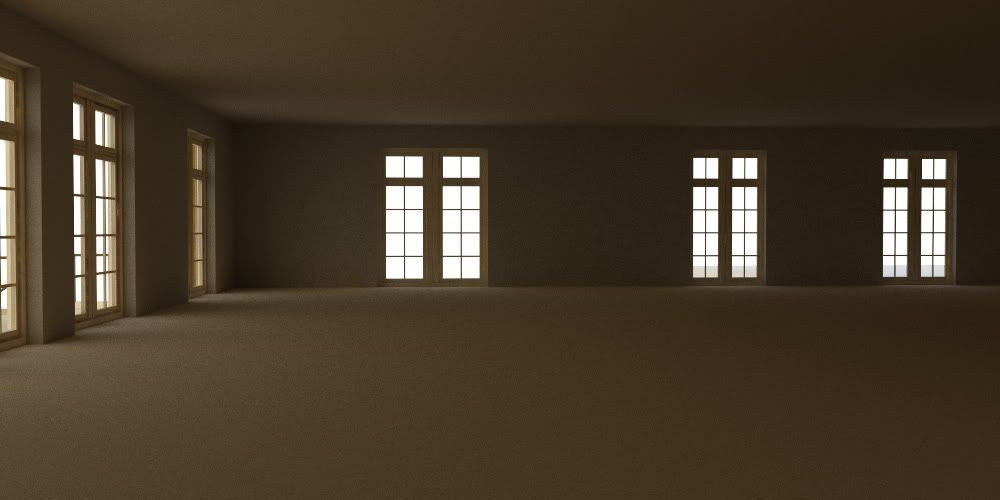Hallo,
here an example. I use Vray for Rhino since a few weeks only, I'm not expert, but I get many question how to do renderings. So I want to try to share my experience here. The image is WIP of a current project.
The environment is a blury small HDRI. I have set the intensity of both environment maps at 3 - gamma 1 (because I like to get a stronger lighting effect, but 2 is good in many cases too). At the current VfR is a small bug, the maps must be horiz. rotate 180?. Don't forget to set "environment".
If somebody like, here my used sunset HDRI for free: http://www.simulacrum.de/download/El...vBlur3_180.hdr
I have used Vlados recommended method:
Image sampler - adaptive QMC 1/100
QMC smapler - amount 1 - threshold 0.001 - samples 8 - subdiv mult 1
The colormapping I have set at exponential without clamp. So I avoid burn out areas in the image. The clamp option bring me a dull look only and I like to adjust the HDRI output image, so I don't use it. Interesting for me, the exponential mode seems to avoid bad aliasing effects like the clamp option.
GI settings:
QMC GI - 6 subdiv - 6 bounce
LC 4000 - 0.002
The high LC subdiv count is only necessary for high res images. My example is rendered at 3000x2000 pixels in 5h 20min at a P4 2.6GHz 750MB. For example, for 500x1000 a LC of 1000 would be good enough.
Material: the outside walls are using a color of HSV 38-34-204. I try to avoid high color brightness limited by 200 ... 220. It's important for a good light calculation. The windows are single planes with a fresnel reflection of ior 1.5 and a refraction of ior 1.
In postwork I have add a vignetting effect per free tool PTLens. It's a nice tool to get some camera lens effects or to retouch this kind of effects.
Also I have used a secondary ray bias of 0.01. So I avoid, if two surfaces of the same material intersect, Vray dosn't show a black intersection area. I don't know, it's necessary in this example here.
If somebody like a Maxwell look, add some noise per postwork.

here an example. I use Vray for Rhino since a few weeks only, I'm not expert, but I get many question how to do renderings. So I want to try to share my experience here. The image is WIP of a current project.
The environment is a blury small HDRI. I have set the intensity of both environment maps at 3 - gamma 1 (because I like to get a stronger lighting effect, but 2 is good in many cases too). At the current VfR is a small bug, the maps must be horiz. rotate 180?. Don't forget to set "environment".
If somebody like, here my used sunset HDRI for free: http://www.simulacrum.de/download/El...vBlur3_180.hdr
I have used Vlados recommended method:
Image sampler - adaptive QMC 1/100
QMC smapler - amount 1 - threshold 0.001 - samples 8 - subdiv mult 1
The colormapping I have set at exponential without clamp. So I avoid burn out areas in the image. The clamp option bring me a dull look only and I like to adjust the HDRI output image, so I don't use it. Interesting for me, the exponential mode seems to avoid bad aliasing effects like the clamp option.
GI settings:
QMC GI - 6 subdiv - 6 bounce
LC 4000 - 0.002
The high LC subdiv count is only necessary for high res images. My example is rendered at 3000x2000 pixels in 5h 20min at a P4 2.6GHz 750MB. For example, for 500x1000 a LC of 1000 would be good enough.
Material: the outside walls are using a color of HSV 38-34-204. I try to avoid high color brightness limited by 200 ... 220. It's important for a good light calculation. The windows are single planes with a fresnel reflection of ior 1.5 and a refraction of ior 1.
In postwork I have add a vignetting effect per free tool PTLens. It's a nice tool to get some camera lens effects or to retouch this kind of effects.
Also I have used a secondary ray bias of 0.01. So I avoid, if two surfaces of the same material intersect, Vray dosn't show a black intersection area. I don't know, it's necessary in this example here.
If somebody like a Maxwell look, add some noise per postwork.


Comment